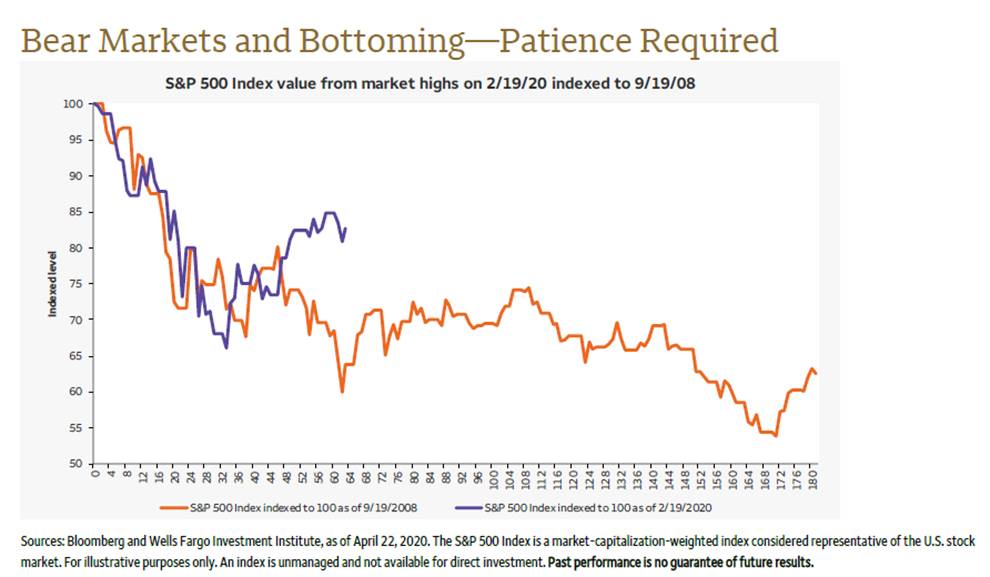To say value stocks have had a rough time of it is an understatement.

Published: April 29, 2020 at 9:12 a.m. ET, By Steve Goldstein
They were out of favor during the bull market that preceded the coronavirus pandemic. During the coronavirus crash, value stocks were the worst performing of the major styles, and they also were the worst in the current recovery. Value stocks relative to growth stocks have fallen to 20-year lows, according to Deutsche Bank data. (Tuesday’s session was a rare exception, with economically sensitive cyclicals and value stocks advancing as health and tech stocks fell.)
“The fact that value underperformed for the longest period of time in history I think makes people believe that value is never going to come back. I believe that will be proven wrong,” says Dave Iben, the founder and chief investment officer of Kopernik Global Investors.
“The idea that earnings can be plunging and some of these stocks hitting new all time highs, it’s just not going to be sustainable. But even better than that, and who cares if I’m wrong on that — value stocks are at generational sort of cheap values and so that the bifurcation between some stocks being very loved and some stocks being sold for prices that are a lot lower than they were back 10 or 12 years ago, is what we think is very interesting.” He says he could envision a situation like the dot-com bubble bursting, when value stocks in 2000 and 2001 advanced even as the broader market declined.
Iben is mostly looking outside the U.S. for stocks — the firm’s global all-cap fund had just 5.5% of its portfolio in U.S. companies at the end of March. While still owning Gazprom US:OGZPY and Sberbank AT:SBER, Iben says he has increasingly taken profits from Russian stocks and invested in South Korean companies.
Telecom KT Corp. US:KT is a big holding, as Iben says the firm is trading at less than book value, at a single-digit price-to-earnings ratio, and at roughly 6 times less per customer than Verizon Communications.
He’s also a big fan of gold miners including Australia’s Newcrest Mining US:NCMGY and Canada’s Centerra Gold CA:CG, noting that the price of gold US:GC00 has gone up 2½ times over the last 12 years, but the mining index has fallen in half.
“Gold underground is so cheap that we can buy these companies, pay all the money it takes to build the mines, extract the gold, sell it, and liquidation value is well above the stock prices in some cases,” he says.
In fact, he finds a number of commodities undervalued, including copper, natural gas and uranium. “We like Cameco US:CCJ, we like a lot of the uranium stocks, and we’re once again interested in the gas and oil stocks as prices turn negative.”
General Electric US:GE isn’t a company he would have imagined owning back when the conglomerate sported the world’s largest market cap and was an investor darling. After years of shrinking, dealing with debt, management turnover and write-downs, GE still has a premier jet-engine business and a premier health-care company, he says. Iben says investors now are punishing GE for its exposure to aviation and energy.
“Price is everything,” he says. “We think that at $7 we have a lot more upside than we do downside, and so we’re happy to own a company like that, that was once very loved and is now very hated.”
GE on Wednesday missed first-quarter adjusted profit and free cash flow expectations but topped revenue forecasts.
The buzz
The Federal Reserve’s latest decision is due at 2 p.m. Eastern. With rates nearly at zero, attention will turn to the waves of new programs the central bank has set up to boost lending and its assessment of the economy.
First-quarter GDP slumped 4.8%, even worse than economists had forecast.
Google’s profits were damaged even more than expected as the COVID-19 pandemic caused “a significant slowdown in ad revenues,” parent company Alphabet US:GOOG revealed, as it nonetheless beat estimates on sales.
Plane maker Boeing US:BA reported stronger-than-expected cash flow, with Facebook US:FB , Microsoft US:MSFT and Tesla figures coming after the close.
The market
U.S. stock futures US:ES00 were pointing to an upbeat start, with the Dow industrials contract US:YM00 up over 400 points, extending gains as Gilead Sciences US:GILD reported a positive drug trial of its coronavirus treatment.
Oil US:CL futures surged, climbing back above $14 a barrel.
The yield on the Italian 10-year government bond rose 2 basis points, after Fitch Ratings downgraded the country’s credit rating to BBB, which is one notch above junk.
The chart

The Wells Fargo Investment Institute overlaid the current downturn, and recovery, against 2008. The obvious difference between now and the global financial crisis is the quick upturn, and the firm says it has unfavorable view on developed and emerging market equities.
Source: www.marketwatch.com